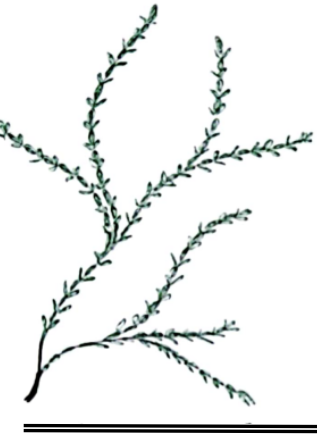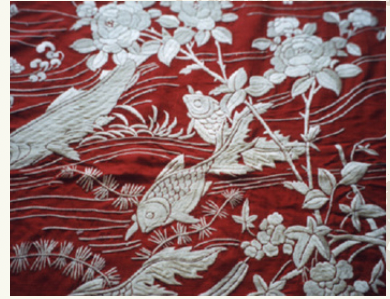From the 3rd to the 28th March, in the Creative Exchange space of the ESI building in the University of Exeter’s Penryn (Cornwall) campus displaying an exhibition titled Home/Land which showed the artworks of six artists from Jaffna, Sri Lanka, depicting their experiences in the aftermath of the civil war in their country. The exhibition was part of a collaboration between researchers at the University of Exeter, particularly Dr Gillian Juleff and Dr Deborah McFarlane, the University of Leicester, Museum of London Archaeology and the Arts Faculty at the University of Jaffna, Sri Lanka, led by the Professor of Fine Arts, Sanathanan Thamotharampillai. The team has been working together on a project entitled ‘Identity, place and community: archaeologies of the recent past in post-war Jaffna, Sri Lanka’.
This blog will introduce the artworks in the exhibition and then give an account of the panel discussion organised on the 7th of March with Professor Sanathanan, Dr Struan Gray from the Falmouth School of Film and TV, Dr Laura Hodsdon, Senior Research Fellow, Falmouth University, and Shibani Das an AHRC Doctoral student and a representative of the South Asia Centre.
The exhibition, Home/Land, consisting of artworks created independently by the artists, contends with the intersection of place, identity, and memory. It showcases the emotional impact that the war had on local communities, especially those who were denied the chance to remember by the state. The various artworks were themselves an exploration of memory, both ‘individual and collective’, which is “embedded in the experience of loss of a land and the longing for” (T. Shanaathanan, 2023).
As you enter the exhibition, Mano Prashath’s rendition of facades greets you. By using these architectural forms of the entryway to homes, from across time periods, Prashath comments on the in-betweenness that they can represent, “a space between inner (agam) and outer (puram), us and them, sacred and profane, social and psychological”.
The artwork of of Jasmine Nilani Joseph works with fences, built around refugee camps and militarized zones, and invoked their haunting effect as symbols of boundaries. As Shibani Das pointed out in the panel discussion, the fences showcased the double marginalisation of women during the war, who were not only suffering outside the fence but also inside it, within their homes.
Next, Vijitharan Maryathevathas’ mixed medium work on paper, a collation of many forms and memories, each overlapping and flowing into each other, is together a strong comment on “the complex and fragmented identity of Sri Lankan Tamils” forced to migrate from the country.
An important theme brought out both with the exhibition and then in the discussion was that of land, and landscapes. Tamil literature from the Sangam period speaks about five landscapes, termed thinai. Professor Sanathanan reminded us of the work of Cheran (2007[JG1] ) who extends these thinai to the experience of the “the displaced and diaspora”. Thus, these thinai become not only physical planes but “are infused with imagination, located in time, and associated with specific patterns of behaviour”. Suntharam Anojan’s acrylic work powerfully invokes these landscapes, which he believes “are buried in the remnants of our culture”, and which he exposed in his work aptly titled “Layer Upon Layer”. His work reminds us that war impacts not only people but also the landscape, alongside the culture and daily lives of the people. It is a poignant statement on the lasting effects of the war in Sri Lanka on the social fabric of a place, in Anojan’s case, the Vanni, the vast tract of scrub jungle in the north that separates the Jaffna peninsula from the south of the island.
Dis/placement by Professor Sanathanan used jigsaw pieces to show the rupture that war leads to. Each piece “represents an identifiable or memorable fragment that is part of a larger vision or experience”. Exploring the connections between physical space, memory and history, the broken puzzle pieces he has used are able to show the “impossibility of linear histories” in a war zone.
T. Krishnapriya’s line drawings, although just lines, were powerful means of grieving. As she writes, “drawing with each stroke re-enacts desire and loss”. As Shibani pointed out in the discussion, works like this can speak about pain and suffering, humanizing violence, but without the use of the body or the human form. Abstract lines or representations of structures are employed in a way by the artists that they are still able to capture the emotional impact of the war, and a war-like situation which continues in Jaffna.
Her other installation was a haunting video that spoke to the suffering of women during the war. Based on the experience of a woman who was forced to give birth on the temple steps after being denied the right to visit the hospital and subsequently succumbed to death, the video evoked inner anatomies as it imagined the experience inside the woman’s womb and showed the flow of blood that connected the baby with the mother.
Prof Sanathanan’s Incomplete Thombu was the last installation to farewell the visitors before leaving the exhibition, almost like a visitor’s comment book. It used the media of the artbook which recorded the houses and buildings that were lost in the war and are drawn from memories in the book. It spoke to the loss of everyday life as it showcased the drawings of objects like vases, mugs and other household items that are now gone. As Dr Guleff wrote, “it is a quiet but very powerful inspiration for our [their] project as it uses the concepts and methods of archaeology to open up memory” and comment on the destruction of heritage, both monumental and small, with the war.
The panel discussion held on the 7th of March, at the Environment and Sustainability Institute accompanied the exhibition but also went much beyond it, discussing themes of heritage, repression, and community in Jaffna, as well as Cornwall and in England broadly. Dr Gill Juleff brought this out in her introduction to the panel, where she reflected on the ‘unexpected synergies’ between Sri Lanka and Cornwall, both peninsulas with a distinct sense of identity and place.
The discussion began with reflections on how ‘absence’ shaped the exhibition, with Prof Sanathanan pointing out its role in giving agency to people to remember, an opportunity denied to the people of Jaffna with the government ban on commemoration and memorials. The drawings, in contrast, tell stories of displacement, in a situation where you are not permitted to publicly grieve.
The discussion progressed to themes of state oppression, as Dr Gray provided a comparison with repression in Chile which also led to the disappearance of ways of life, while Dr Hodsdon inversely commented on festivals in Cornwall which helped in community building, representing these ways of life. As the panelists explored the impact violence has on everyday lives, spaces, practices and cultures, the way war and the many forms it takes even after it has ended, leads to the loss of social fabric was also brought out.
As Professor Sanathanan pointed out, it is ironic how the struggle for a homeland had made many in Jaffna homeless. The discussion then reflected on the impact of the war on the landscape, or in Jaffna, the many landscapes or thinai. The art in the exhibition was able to thus provide ‘alternate forms of landscape art’ as Dr Gray showed, and represented new forms of graphic art that could be used for protest, as Shibani pointed out. This art, as Prof Sanathanan argued, is not saying “you have done this to us” but rather that “this has happened to us”.
Prompted by Dr McFarlane’s question, the panel then tried to answer how creative knowledge can come into conflict with state/official/elite accounts of war and violence. As Prof Sanathanan pointed out, there are victory memorials and museums sponsored by the state in Jaffna which portray a particular narrative of the war. This exhibition, in comparison to those visible reminders, might not have the same reach, but it does give space for individual reflection to minority groups who are not allowed to memorialise the war through other means. Dr Gray provided a comparison with Chile, which exemplifies “a different cartography of violence”, and where the role of the state in transnational justice is different. As Shibani argued, moving on from the past can thus mean different things, and we need to reflect on what shapes and form it can take, who undertakes it and where it happens
The floor was then open to questions from the audience. Dr Shubranshu Mishra’s question prompted an exploration of the use of the term ‘heritage’ and the connotations it carries. Dr Gray questioned the translatability of the term, especially in the context of Chile and Sri Lanka. Alternatives were thus proposed, such as that of culture, and as Dr Hodsdon chimed in, intangible heritage and living cultures needed to be considered in this scoping and defining of heritage too.
Dr Xinan Jin made a relevant intervention. She was curious about the division of labour and its gendered aspects in the work of memorialisation. Professor Sanathanan spoke about how young women artists were emerging in Sri Lanka and their active role in land reclamation movements. As mentioned above, work like that of fences in the exhibition, was able to particularly represent women’s plight.
The discussion ended with an apt note, as Professor Sanathanan answered a question about the impact of this exhibition on local communities. He reflected on whether creative ways of memorialisation had made the community stronger. He answered in both the affirmative and the negative. He illustrated that these spaces could give the local community the chance to remember and grieve, and thus were an important stage in the process of remembering. However, minorities in the countries still faced the consequences of the lack of power and political representation.
The exhibition and the panel were both important means of prompting discussion on the war in Sri Lanka in Exeter and Cornwall. As Shibani pointed out, the artworks in the exhibition represented anyone’s struggle and could have broad resonances. Together, the outcomes of this collaboration on the past in Jaffna prompted the audience to think about the impact of war on people’s homes and ways of life and fostered discussion on the importance of memorialisation.
Works cited:
Cheran, R, (2007). “The Politics of Identity; Bakhtin’s Chronotope and the Tamil Concept of Thinai”, in R. Cheran, Darshan Ambalavanar and Chelva Kanaganayagam,(eds.), New Demarcations; Essays in Tamil Studies. Toronto: Canadian Scholar’s Press Inc.

